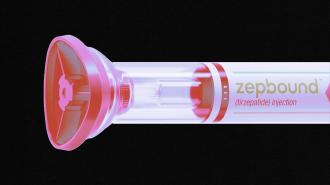Solar Power Isn’t Over Yet
The industry is having a somewhat visible freakout. But broadly, it’s doing OK.

To take it from recent headlines, it seems as though the global solar-power industry, following half a decade of record growth and governmental investment, flew just a bit too close to the sun. California, a longtime pioneer in solar development, has earned the most attention here: The tiny Golden State companies dedicated to rooftop-solar installation, assembly, and production are slashing thousands of jobs and facing bankruptcies, thanks to a steep drop in demand that, executives claim, is the direct consequence of reduced solar-boosting incentives from the state government. But it’s not just California: Home-security company ADT, based in Florida, recently decided to close its solar-installation arm after just three years. And larger solar firms across the country, like Texas-based Sunnova, are also facing financial headwinds, as Time magazine’s Alana Semuels noted in a report grimly headlined “The Rooftop Solar Industry Could Be on the Verge of Collapse.” About a dozen other states, including Idaho, are also cutting rooftop-solar benefits.
The broader market is facing troubles in solar-happy Europe too. After Germany’s last domestic solar-module producer announced plans to relocate to the United States, a regional solar association warned, “We’re about to lose the whole European [photovoltaic] manufacturing industry.” Other solar factories are either fully shuttering, planning to try their luck in the U.S., or begging European Union lawmakers for additional financial support, citing the challenges of a market suddenly saturated with cheap Chinese imports. This echoes calls from swing-state senators back in the U.S. for the Biden administration to raise its already-high tariffs on imports of key Chinese solar parts, even though many solar manufacturers dependent on those components claim this would harm their businesses. Meanwhile, prices for essential solar-panel elements, like silver, remain high, as do interest rates and disaster-insurance premiums, causing nervousness among potential investors.
It all sounds pretty bad! Is solar doomed?
I am happy to report that the era of harnessing power from the sun is not yet over. On a wider scale, the solar sector is still ballooning and providing record amounts of green energy worldwide. Despite its manufacturing woes, Germany’s nationwide solar installation through 2023 beat expectations. Greece is well on the way to tripling its solar capacity by the end of the decade. China, the undisputed champion of solar, grew its economy last year primarily through rapid renewables development; by the end of this year, the country’s solar and wind output is set to finally outpace the rate of electricity generated from coal, assisted by innovations in ocean-floating panels. (Just one indicator of this success: In 2023 alone, China added more solar panels than the U.S. has ever deployed.) Worldwide renewables capacity grew much more in 2023 than in 2022, despite continuing post-COVID economic shake-ups in supply-chain stability, inflation, and hiked interest rates. North of the U.S. border, Canadian solar has become a hot investment vehicle. And even within the U.S., there are success stories in unexpected places: The most Republican voting district in the country is excited about a solar factory coming to town. Puerto Rico is expanding its rooftop-solar incentives, which have helped the territory to stabilize its grid. The Biden administration is setting aside millions of acres of Western public lands for utility-scale solar. Cooperatively owned solar systems are still taking off in both California and Texas, while the Lone Star State continues to beat records for solar-power production. The Tennessee Valley Authority just inked significant new contracts to expand its arrays of solar panels and batteries, and New Jersey passed a bill to curb limits on expanding community solar.
It’s a confusing mishmash of good and bad news, not unlike all the contradicting forecasts that hit wind energy all of last year, especially offshore. But a finer analysis of all the factors at play here consistently points to the main issue: the folly of leaning primarily on the private sector to shoulder the burden of an existentially necessary energy transition.
The original sin of U.S. solar goes back to the 1980s, when the country that produced the first silicon cells for capturing energy from the sun (that would be America) bucked its initial interest in supporting solar at home. This allowed East Asian countries, which already benefited from ample deposits of necessary minerals and metals, to attract hopeful developers, while established Western fossil-fuel firms like Exxon, which had previously explored alternative-energy sources, scrapped such projects to go all in on oil instead. Then, in its attempt to catch up after decades of neglect, the Obama administration passed legislation that, at most, provided liquid subsidies to private firms willing to pick up the slack. Although those tax credits were and continue to be helpful, they didn’t do much to sustain companies, leaving them vulnerable to U.S.–China tariff wars that made establishing a homegrown sector prohibitively expensive. Speaking of China: Thanks to its decadeslong, government-aided mission to dominate solar (which has also included human rights abuses), the country set up a large-scale operation that could shoot out cheap solar panels and components at scale, all the way to export routes. This simultaneously exploded Chinese renewable-power capacity and undermined international competitors who couldn’t beat such low prices for parts.
There’s a reason America is so far behind. Taking advantage of low global prices afforded by the explosion of cheap Chinese supplies is one thing; coordinating a supply chain, sourcing all needed ingredients, training skilled workers, and withstanding regular price fluctuation are all tougher without more governmental backstops and assistance. (Consider the fact that houses of worship, which don’t pay taxes, could not qualify for Obama-era subsidies if they wanted to go solar—an issue that was fixed thanks only to subsequent adjustments in the Inflation Reduction Act.) Plus, in the early 2010s, batteries for energy storage were nowhere near as prevalent and cost-effective as they are today, which made the infamous “intermittency” issue (the sun doesn’t shine at night, wind is not as plentiful in certain regions, etc.) much more of a concern back then as opposed to now.
That (welcome) boom in battery manufacturing is one reason the solar industry is currently shape-shifting. Before then, rooftop-solar users tended to take advantage of generous “net-metering” policies in certain states, which compensate homeowners for feeding their excess solar energy back into the grid for wider use. For New Mexico and Maine, the thinking behind today’s solar-incentive adjustments is that net-metering has worked almost too well, making it imperative that they raise additional state revenue so that budgeted tax credits don’t run out too quickly. And as Heatmap News’ Matthew Zeitlin has explained, California is now so awash in roof-solar power that it’s instead incentivizing the ownership of solar-and-battery systems that can store energy, rather than promoting energy exchange that may stress the grid.
The problem is, those battery systems are difficult to deal with. Batteries are cheaper than they once were, but they’re still pricey on an individual level, which is why they’ve been adopted far more in commercial applications than residential ones. (State regulators in Connecticut recently increased their incentives for residential battery storage by nearly $10,000.) A lot of the smaller solar companies out West lack the means to expand out into providing dual panel-battery apparatuses, leaving them at a stark disadvantage in the new market. There’s also the fact that several homeowners have panels from companies that went out of business long ago or were swallowed up by private equity vultures—which, as Time’s Semuels has written, have little to no interest in actually maintaining the quality and capacity of pre-installed panels. This has left behind a lot of abandoned panels and frustrated homeowners.
There are still many solar and battery incentives left in the U.S., allowing places like sun-soaked Arizona to push ahead with hybrid facilities and setups. The members of the European Union, on the other hand, have often failed to coordinate sensible, consistent clean-energy rebates and buildouts over time, resulting in an impressive array of solar tech that’s then built and distributed unevenly throughout their continent
It seems pretty apparent, on both sides of the Atlantic, that a strategy of throwing cash at small-scale manufacturers—without providing more top-down insurance and support for less-resourced firms, without establishing wide-scale job-training and just-transition programs, without careful coordination among cooperative, local, national, and international authorities—has helped create the energy transition economy while leaving it fatally susceptible to shocks and changes. America’s rooftop-solar mess demonstrates that, while private enterprise can be a player in greening global energy, it cannot be solely relied upon to complete the task with some government funds in its pocket. To leave a necessary energy transition to the directives of the profit motive, just because China helped to cheapen the price of solar supply and generation, is to abandon smaller solar companies to the weirdness of a still-growing, often-speculative market. It also expects that more-capitalized private firms or utilities will care about producing and maintaining solar systems for altruistic reasons—even though private equity’s rooftop misadventures show this to be a lie. The future of a healthy, stable clean-energy industry should be spurred by publicly stewarded, communitarian projects, with more intensive government support for training, setup, installation, power pricing, maintenance, and recycling (and batteries!). Plus, accountability for those companies that benefit from state incentives only to abandon solar when it’s no longer in their interest.
The U.S. may be taking some heed of all this at last, with the Federal Emergency Management Agency offering to compensate local governments that fuel their recovery from extreme-weather disasters by installing solar panels, heat pumps, and microgrids. In a time when durably installed solar panels have been demonstrably advantageous in helping communities recover from climate change–fueled storms, this is a step toward the right kind of top-down action. The federal government is also accelerating efforts to green its own infrastructure, with rooftop solar coming to the Pentagon and batteries coming for important observatories. Maybe the U.S. government won’t do everything—but at least it can do its part to maintain a sunny forecast for the solar business, whether out in Western lands or on its own buildings. More structure for everyone else’s roofs would be welcome too, though.
To conclude: Despite recent challenges facing the solar industry, global solar capacity is expanding, with notable growth in Germany, Greece, China, and even unexpected places like the most Republican voting district in the U.S. However, the current dependency on the private sector has left the industry vulnerable, highlighting the need for more government support and oversight.











